


Grading Standards for World Paper Money
INTRODUCTION
Grading is the most controversial component of paper money collecting today. Small differences in grade can mean significant differences in value. The process of grading is so subjective and dependant on external influences such as lighting, that even a very experienced individual may well grade the same note differently on separate occasions.
To facilitate communication between sellers and buyers, it is essential that grading terms and their meanings be standardized and as widely used as possible. This standardization should reflect common usage as much as practicable. One difficulty with grading is that even the actual grades themselves are not used every place and by everyone. For example, in Europe the grade "About Uncirculated" (AU) is not in general use, yet in North America it is widespread. The European term "GoodVF" may roughly correspond to what individuals in North America would call "EF".
The grades and definitions as set forth below cannot reconcile all the various systems and grading terminology variants. Rather, the attempt is made here to try and diminish the controversy with some common sense grades and definitions that aim to give more precise meaning to the grading language of paper money.
HOW TO LOOK AT A BANKNOTE
In order to ascertain the grade of a note, it is essential to examine it out of a holder and under a good light. Move the note around so that the light bounces off at different angles. Try holding it up obliquely so that the note is almost even with your eye as you look up at the light. Hard-to-see folds or slight creases will show up under such examination. Some individuals also lightly feel along the surface of the note to detect creasing.
CLEANING, WASHING, PRESSING OF BANKNOTES
Cleaning, washing or pressing paper money is generally harmful and reduces both the grade and the value of a note. At the very least, a washed or pressed note may lose its original sheen and its surface may become lifeless and dull. The defects a note had, such as folds and creases, may not necessarily be completely eliminated and their telltale marks can be detected under a good light. Carelessly washed notes may have white streaks where the folds or creases were (or still are).
Processing of a note which started out as Extremely Fine will automatically reduce it at least one full grade.
Glue, tape, or pencil marks may sometimes be successfully removed. While such removal will have a cleaned surface, it will improve the overall appearance of the note without concealing any of its defects. Under such circumstances, the grade of the note may also be improved.
The words "pinholes", "staple holes", "trimmed", "writing on face", "tape marks", etc. should always be added to the description of a note. It is realized that certain countries routinely staple their notes together in groups before issue. In such cases, the description can include a comment such as "usual staple holes" or something similar. After all, not everyone knows that such-and-such a note cannot be found otherwise.
The major point of this section is that one cannot lower the overall grade of a note with defects simply because of the defects. The price will reflect the lowered worth of a defective note, but the description must always include the specific defects.
The Term "Uncirculated"
The word "Uncirculated": is used in this grading guide only as a qualitative measurement of the appearance of a note. It has nothing at all to do with whether or not an issuer has actually released the note to circulation. Thus the term "About Uncirculated" is justified and acceptable because so many notes that have never seen hand-to-hand use have been mishandled so that they are available in, at best, AU condition. Either a note is uncirculated in condition or it not; there can be no degree of uncirculated. Highlights or defects in color, centering and the like may be included in the description but the fact that a note is or is not in uncirculated condition should not be a disputable point.
GRADING GUIDE - Definition of Terms
UNCIRCULATED: A perfectly preserved note, never mishandled by the issuing authority, a bank teller, the public or a collector. Paper is clean and firm, without discoloration. Corners are sharp and square, without any evidence of rounding. (Rounded corners are often telltale sign of a cleaned or "doctored" note.) An uncirculated note will have its original natural sheen.
NOTE: Some note issues are most often available with slight evidence of counting folds (creases). Also, French-printed notes usually have a sight ripple in the paper. Many collectors and dealers often refer to such a note as AU-UNC.
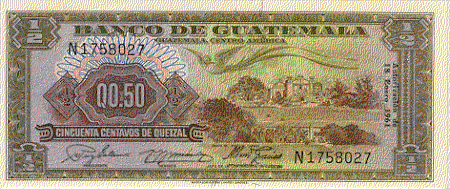
Example - UNCIRCULATED note
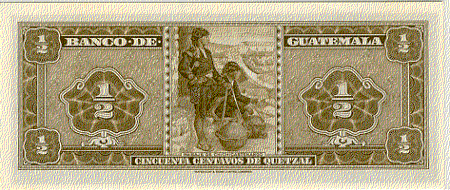
ABOUT UNCIRCULATED: A virtually perfect note, with some minor handling. May show evidence of bank counting folds at a corner or one light fold through the center, but not both. An AU note cannot be creased, a crease being a hard fold which has usually "broken" the surface of a note. Paper is clean and bright with original sheen. Corners are not rounded.
NOTE: Europeans will refer to an About Uncirculated or AU note as EF-UNC or as just EF . The extremely fine note described below will often be referred to as GVF or Good Very Fine .
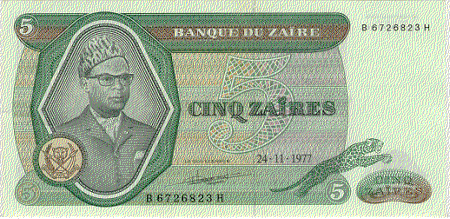
Example - ABOUT UNCIRCULATED - Note the corner dings at the lower left front. There is a mark on the back.
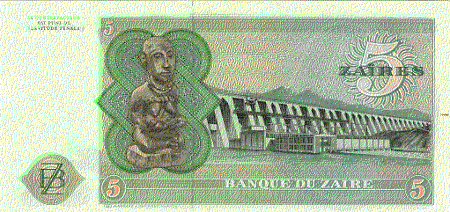
EXTREMELY FINE: A very attractive note, with light handling. May have a maximum of three light folds or one strong crease. Paper is clean and bright with original sheen. Corners may show only the slightest evidence of rounding. There may also be the slightest sign of wear where a fold meets the edge.
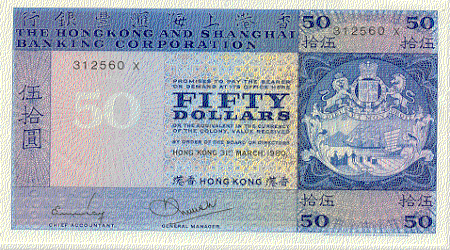
Example - EXTREMELY FINE - Note the fairly sharp vertical crease at center along with minor handling creases at the upper right.
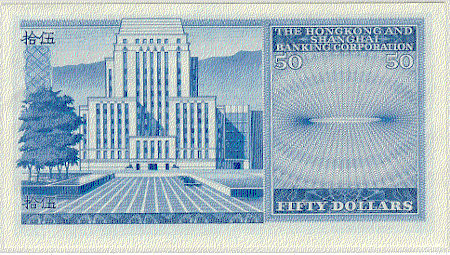
VERY FINE: An attractive note, but with more evidence of handling and wear. May have a number of folds both vertically and horizontally. Paper may have minimal dirt, or possible color smudging. Paper itself is still relatively crisp and not floppy. There are no tears into the border area, although the edges do show slight wear. Corners also show wear but not full rounding.
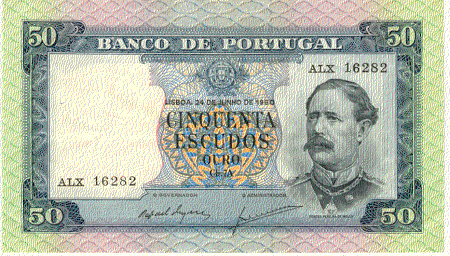
Example - VERY FINE - Note the three vertical creases, but an overall clean appearance.
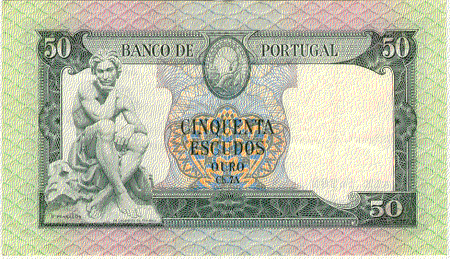
FINE: A note which shows considerable circulation with many folds, creases and wrinkling. Paper is not excessively dirty, but may have some softness. Edges may show much handling with minor tears in the border area. Tears may not extend into the design. There will be no center hole because of folding. Colors are clear but not bright. A staple hole or two would not be considered unusual wear in a Fine note. Overall appearance is still on the desirable side.
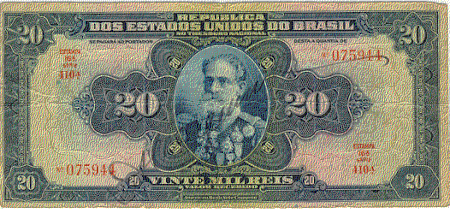
Example - FINE - Note is somewhat limp and has horizontal and vertical folds.
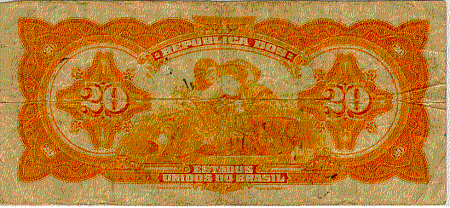
VERY GOOD: A well used note, abused but still intact. Corners may have much wear and rounding, tiny nicks, tears may extend into the design, some discoloration may be present, staining may have occurred, and a small hole may be seen at center from excessive folding. Staple and pinholes are usually present, and the note itself is quite limp but NO pieces of the note can be missing. A note in VG condition may still have an overall not unattractive appearance.
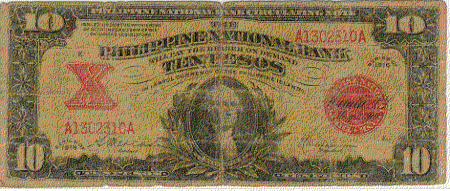
Example - VERY GOOD note
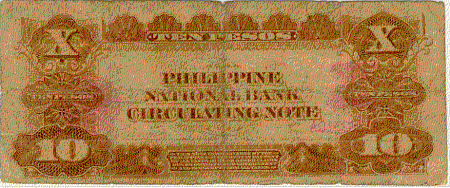
GOOD: A well worn and heavily used note. Normal damage from prolonged circulation will include strong multiple folds and creases, stains, pinholes, and/or staple holes, dirt, discoloration, edge tears, center hole, rounded corners and an overall unattractive appearance. No large pieces of the note may be missing. Graffiti is commonly seen on notes in Good condition.
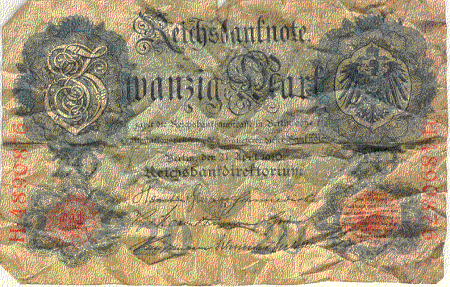
Example - GOOD note
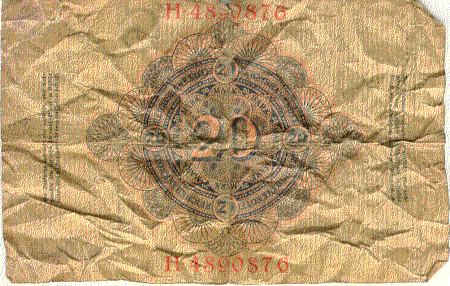
FAIR: A totally limp, dirty and very well used note. Larger pieces may be half torn off or missing, beside the defects mentioned under the Good category. Tears will be larger, obscured portions of the note will be bigger.
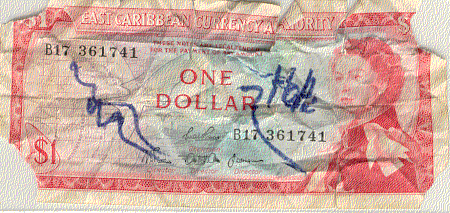
Example - FAIR note
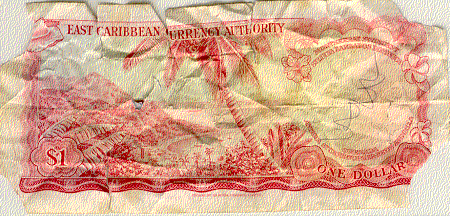
POOR: A "rag" with severe damage because of wear, staining, pieces missing, graffiti, larger holes. May have tape holding pieces of the note together. Trimming may have taken place to remove rough edges. A Poor note is desirable only as a "filler" or when such note is the only one known of that particular issue.
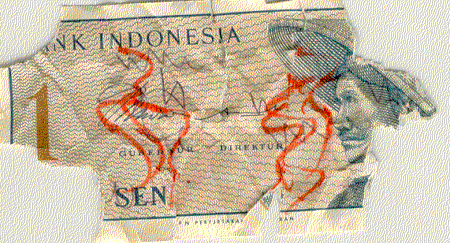
Example - POOR note
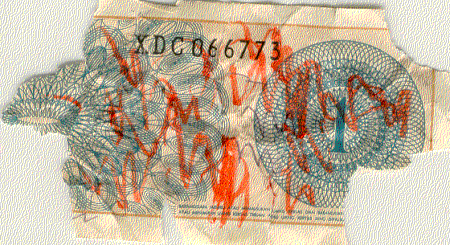
STANDARD INTERNATIONAL GRADING TERMINOLOGY AND ABBREVIATIONS
PROOF – UNCIRCULATED – EXTREMELY FINE – VERY FINE – FINE – VERY GOOD – GOOD – POOR
Abbreviation PRF – UNC – EF or XF – F – VG – G – PR